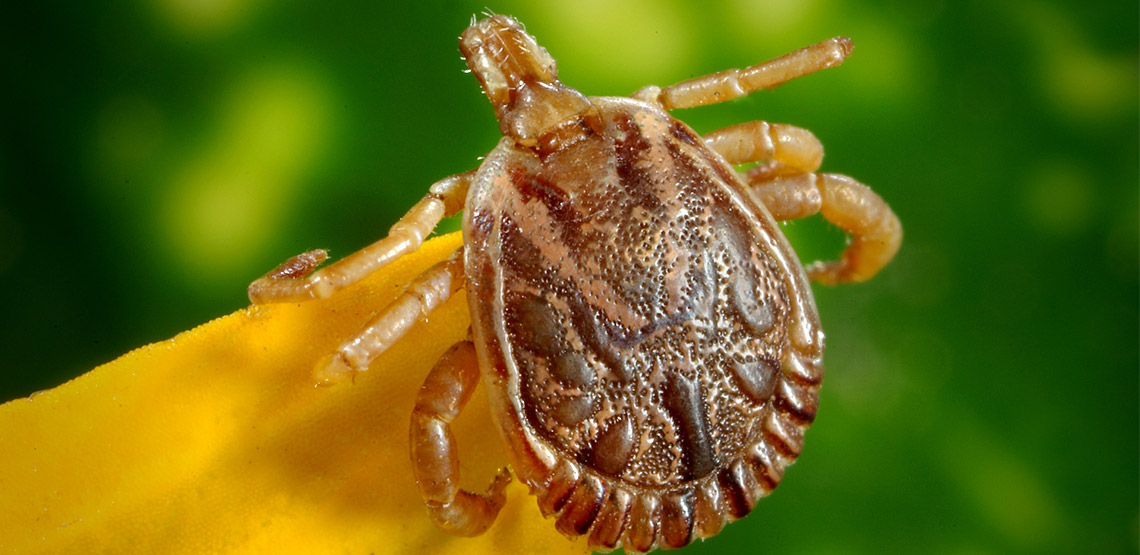Ticks Can Cause Serious Health Problems
Flea and tick prevention for dogs is routine for many pet parents. Keeping your furry family members safe is easy with a routine vet checkup and the right preventative medication. In this article, we'll look at different options for tick and flea prevention.
Got Ticks?
It’s worth bearing in mind that the ‘great outdoors’ doesn’t just mean the Rockies, the Appalachian Trail or the Painted Desert. It can be a favorite city park, a beach, a schoolyard, or even your own backyard. Ticks are endemic — they are everywhere — and they carry diseases. Scary stuff!
Ticks must have a host’s blood to survive and to procreate. Blood is their manna, their nourishment, their source of life. Ticks are not vampires. They do not lust for blood. Ticks are merely small Arachnids that must have a blood meal to survive and fulfill their life cycle. Ticks attach to a host animal (deer, dog, bird, human... basically all creatures) and gorge on the host’s blood.
Ticks have been around for a very long time — much longer than us, or dogs for that matter. Think Jurassic Park and you’ll get the idea. That said, let’s consider the most common ticks and what we can do to protect our dogs.
The Tick: What You Need to Know
Ticks are wingless and webless members of the Arachnida (spider) family of bugs. Because ticks don’t fly, they must rely on their eight tiny legs to reach a perch (grass, brush, bushes, etc.) where they lie in wait for an unsuspecting host to walk by. When a tick lands on your dog, it will usually crawl to the warm areas of the body such as the neck, shoulder, belly, tail area, or crotch.
To the tick, warmth signifies a ready source of blood. Also, those hard-to-reach body areas are fairly safe from the dog’s teeth and claws. Those are the obvious places where you should examine your dog each time she’s been outside.
If no ticks are found in those places, don’t stop looking. It is entirely possible the tick or ticks are still hunting for a cozy spot and just haven’t anchored for a good blood meal. Always run your hands through your dog’s hair coat for a tick check and closely examine the ears, around the neck, and under the collar.
Related Search Topics (Ads):
The Solutions: Ways You Can Protect Your Dog
As briefly mentioned above, ticks are known to carry and transmit some microbial diseases that are dangerous and potentially lethal to humans and our pets. The most notable of these today are probably Lyme Disease and Rocky Mountain Spotted Fever, but a host of other pathogenic diseases are known to be transmitted by ticks.
Here are the generally accepted best ways you can protect your dog from ticks:
- Keep your lawn and landscape trimmed.
- Keep tick-bearing animals (mice, raccoons, squirrels, etc.) off your property.
- Check your dog thoroughly for ticks daily and every time he comes in from outside during tick season.
- When you find a tick on your dog, remove and destroy it immediately. Disinfect the extraction site immediately with a quality antiseptic soap and alcohol.
- Avoid wild, grassy and brushy areas — that can be hard to do if yours is a working (sport or herding) dog, so check these dogs very carefully after every outing.
- Use top-of-the-line “vet recommended" flea and tick collars. Avoid those cheap no-name “dollar store" collars.
- Apply tick repellent (dust or spray) before taking the dog out — always follow label directions!
- Use a quality canine spot-on medication as recommended by your vet. Like other OTC products these can be purchased from most pet supply stores, online stores, or directly from your vet. Just be sure to handle and apply properly according to the label.
- Flea and tick shampoos are effective, but only for a short time. These will usually only kill the biters on contact during the bath and are not labeled for residual effectiveness.
- Tick pills are highly effective against ticks and juvenile fleas when given once a month according to label directions. The nice thing about these meds is they are easy to give and, unlike collars and topicals, cats and kids won’t be harmed when they touch or pet the treated dog.
Please note: dog flea and tick repellents and killers are not meant for cats. Many of these products can be deadly to kittens and cats. Always follow label directions and/or your vet’s advice. And, always keep these products out of the reach of children.
Ticks are everywhere. They are the bane of people and animals around the world. And, as we have briefly discussed here, they are a real and present danger to our beloved dogs. It is each and every dog owner’s responsibility to protect his or her dog from these unpleasant and dangerous blood-sucking bugs by using proper tick control, tick protection and tick treatment products.
There are many good methods and products in the anti-tick arsenal but none of them work unless they are used, and used consistently.
